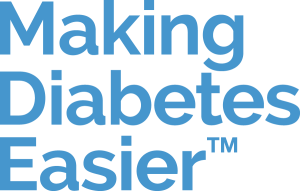Diabetes symptoms in women

Diabetes symptoms in women
Spotting the early signs of diabetes can make a big difference in getting a quicker diagnosis and preventing complications down the road.1
Diabetes symptoms in women might show up a little differently than in men because of the unique ways our bodies work.2 Diabetes can also have specific effects on women’s sexual and reproductive health, making it all the more important to be aware of the symptoms.3
Gender differences also come into play.4 Research shows that women with type 1 diabetes are 40% more likely to die prematurely than men with the condition.4 Women with type 2 diabetes are also at a higher risk for complications like heart disease and may be less likely to receive preventative care.2,4 That's why it’s so important to understand how diabetes affects women specifically.
Common diabetes symptoms in women
The typical diabetes symptoms include:1
- Increased thirst
- Peeing excessively
- Feeling hungry all the time
- Losing weight unintentionally
- Lacking energy or feeling fatigued
- Blurred vision
Sometimes, diabetes can also cause:5
- Numbness or tingling in hands or feet
- Dry skin
- Wounds that heal slowly
- More infections than usual
- Nausea, vomiting or tummy pains
In addition to the common symptoms above, diabetes can cause other problems. Women may experience:3
- Vaginal yeast infections that won’t go away – these happen due to excess glucose being released through the urine, creating an optimal environment for yeast to grow.
- Recurrent urinary tract infections (UTIs) – also occur due to excess glucose in the urine, which encourages bacteria overgrowth. Some medicines for type 2 diabetes can cause recurrent UTIs as an adverse effect.2
- Vaginal dryness – this can occur due to reduced blood flow to this area in people with diabetes as well as due to some of the hormonal changes caused by the condition.
Keeping blood glucose in range with appropriate diabetes treatment and management can prevent or improve these symptoms.3
Diabetes and periods

Diabetes and periods
The menstrual cycle can affect your blood glucose and your body’s response to insulin.6 That’s why, if you’re living with type 1 diabetes as a woman, you may find your blood glucose levels increase or decrease more than usual before and during your period.6
There’s no one-size-fits-all pattern for periods and diabetes, so the best thing you can do is track your symptoms and blood glucose during this time using a journal, an app or your glucose monitoring system.6 By detecting your unique pattern, you’ll be able to better manage your diabetes.6
Taking advantage of diabetes management technology is a helpful way to keep track of your menstrual cycle and how it affects your blood glucose.6 For example, a continuous glucose monitor (CGM) constantly records glucose fluctuations, making it easier to predict patterns.6 Some insulin pumps can create personalised insulin delivery profiles for specific situations, such as your period.
How does your cycle affect your insulin and blood glucose?
In the time leading up to your period, progesterone levels go up, which in some people can lead to food cravings and insulin resistance.6 But, once your period starts, you may become more sensitive to insulin.6 This may cause your blood glucose to rise right before your period and then drop during it. For some people, the opposite happens, while others don’t experience any changes at all.6
Monitoring your blood glucose more often around and during your period is the best way to help prevent and manage these changes.6
How can type 1 diabetes affect periods?
Living with type 1 diabetes can cause irregular, heavy or missed periods for some people.6,7
These symptoms are more likely when diabetes isn’t managed well and when blood glucose levels aren’t within range.6,7 Increasing your time in range can often help.6
Speak to your healthcare team if you’re experiencing period-related diabetes symptoms or challenges.6
Menopause and diabetes

Menopause and diabetes
Some women with type 1 diabetes may experience menopause earlier than those without the condition.7,8 The hormonal changes leading up to menopause may cause blood glucose to swing up and down.8 Frequent episodes of high and low blood glucose can be one of the telltale signs of menopause in women with type 1 diabetes.8
Highs (hyperglycaemia, or hypers) and lows (hypoglycaemia, or hypos) can also resemble menopause symptoms.8 For example, both hypers and menopause can cause fatigue, and both hypos and menopause can cause dizziness and mood swings.8
The only way to tell the difference is to monitor your blood glucose more often.8 Adjusting your insulin intake accordingly can also help.8 Finally, hormone replacement therapy can help with menopausal symptoms like vaginal dryness, so speak to your healthcare team about this option.7,8
PCOS and diabetes
Polycystic ovary syndrome (PCOS) occurs when levels of androgens (a group of sex hormones) are too high.2,9 This has several effects on the body, including insulin resistance and high blood glucose.9 So, women with PCOS are at a higher risk of developing type 2 diabetes.2,9
If you have insulin resistance, your insulin-producing beta cells have to work harder to release more insulin into the bloodstream and stabilise blood glucose.9 Over time, this leads to hyperglycaemia and blood glucose swings.9
Obesity or being overweight may also increase your risk of diabetes if you have PCOS.9 Following a balanced diet and exercising regularly may make it less likely you’ll develop the condition.9 Speak to your healthcare provider about your diabetes risk if you have PCOS, as they can help guide your prevention strategy.9
Gestational diabetes
Gestational diabetes is a condition that causes insulin resistance and increased blood glucose during pregnancy.10
Although the condition itself is temporary, it makes pregnancy complications more likely, along with raising the risk of diabetes and obesity for the mother and increased birth weight for the baby.10 In fact, gestational diabetes is one of the strongest predictors of type 2 diabetes later on.2
Thankfully, complications can be avoided, and gestational diabetes can usually be managed with simple lifestyle changes, such as diet and exercise.10
Diabetes symptoms in women can look slightly differently to those in men. Women with diabetes face unique challenges, such as periods, pregnancy and menopause, which require a personalised approach.
Speak to your healthcare team if you’re experiencing diabetes symptoms or have diabetes and are struggling to keep your blood glucose in range. With the right care, women can manage their condition, improve their wellbeing and avoid complications.
Sources
- IDF. IDF Diabetes Atlas, 10th edition (2021). Accessed 30 September 2024. Available at: https://diabetesatlas.org/idfawp/resource-files/2021/07/IDF_Atlas_10th_Edition_2021.pdf
- Kautzky-Willer A, Leutner M, Harreiter J. Sex differences in type 2 diabetes [published correction appears in Diabetologia. 2023;66(6):1165. doi: 10.1007/s00125-023-05913-8]. Diabetologia. 2023;66(6):986–1002. https://doi.org/10.1007/s00125-023-05891-x
- CDC. Diabetes and women. Accessed 30 September 2024. Available at: https://www.cdc.gov/diabetes/risk-factors/diabetes-and-women-1.html
- IDF. The fight for gender equality: the burden faced by women living with diabetes. Accessed 30 September 2024. Available at: https://idf.org/europe/news/the-fight-for-gender-equality-the-burden-faced-by-women-living-with-diabetes/
- CDC. Symptoms of diabetes. Accessed 30 September 2024. Available at: https://www.cdc.gov/diabetes/signs-symptoms/index.html
- JDRF. Menstruation and type 1 diabetes. Accessed 30 September 2024. Available at: ttps://jdrf.ca/life-with-t1d/menstruation-and-type-1-diabetes/
- Hillson R. Diabetes, menstruation, and the uterus. Practical Diabetes. 2015;32(8):323–324. https://doi.org/10.1002/pdi.1981
- JDRF. Type 1 diabetes and women’s health: periods and menopause. Accessed 30 September 2024. Available at: https://jdrf.org.au/type-1-diabetes-periods-menopause/
- Livadas S, Anagnostis P, Bosdou JK, et al. Polycystic ovary syndrome and type 2 diabetes mellitus: a state-of-the-art review. World J Diabetes. 2022;13(1):5–26. https://doi.org/10.4239/wjd.v13.i1.5
- Rasmussen L, Poulsen CW, Kampmann U, et al. Diet and healthy lifestyle in the management of gestational diabetes mellitus. Nutrients. 2020;12(10):3050. https://doi.org/10.3390/nu12103050


